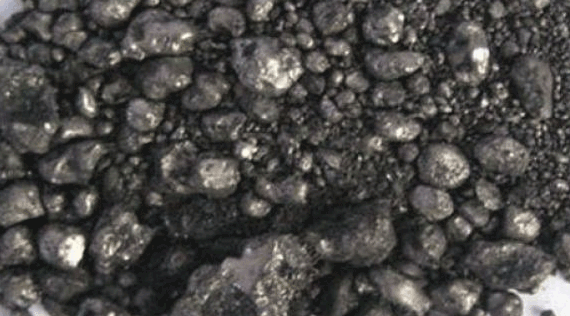
LONDON, May 25 (Reuters) - China's imports of refined nickel have fallen to levels last seen almost 20 years ago, when the country's build-out of industrial capacity was still in its infancy.
The country's stainless steel mills now prefer nickel pig iron (NPI), an intermediate form of the metal that was rediscovered when the nickel price spiked to $51,800 per tonne in 2007. The largest supplier is Indonesia.
China's burgeoning electric vehicle battery sector doesn't need high-purity Class I refined metal either. It is importing ever-growing volumes of other intermediate nickel products, also mostly coming from Indonesia.
The two countries are reshaping the global nickel landscape. Indonesia is ramping up production of Class II products such as NPI and ferronickel, allowing China to physically decouple from the Class I refined metal market.
China's much-reduced import demand for refined nickel captures the broader supply trends playing out in the nickel market and adds urgency to the vexed question of how to price the metal in all its multiplying forms.
China's imports of Class I refined nickel totalled just 3,204 tonnes in April, the lowest monthly tally since January 2004. Imports over the first four months of 2023 came in at 23,453 tonnes, down 65% on the same period of last year.
The country's hunger for this type of nickel peaked at 371,000 tonnes in 2016 on the back of a surge in Russian imports after the Shanghai Futures Exchange (ShFE) included Norilsk Nickel as a deliverable brand.
It's noticeable that there has been no repeat Russian import surge since the country's invasion of Ukraine in February last year.
While China has been mopping up surplus Russian aluminium, imports of Russian nickel were just 5,000 tonnes in January-April, down 57% on the same period of last year.
China also exported 12,400 tonnes of refined nickel in the first four months of this year with 3,600 tonnes going to Singapore and 2,000 tonnes each to India and the Netherlands.
China's export numbers include both outright exports and shipments of untaxed metal sitting in bonded warehouses and it's quite possible this year's outbound flows were simply warehouse turn-around trades.
Either way, the country's net call on refined nickel from the rest of the world was just 11,000 tonnes in the first four months of this year, down from 61,000 tonnes in January-April 2022.
Part of the reason for the sharp drop in imports is the increased competition for Class I metal everywhere else.
It remains the material of choice for conversion into battery-grade sulphate for those not invested in the Indonesian nickel boom.
Demand for refined metal has been reflecting in falling London Metal Exchange (LME) stocks, which at 38,916 tonnes are at their lowest level since 2006.
But for the most part China simply doesn't need much Class I metal any more as it pivots towards Indonesia's supply of Class II intermediate nickel products.
China imported 628,000 tonnes of Indonesian NPI in April, a new monthly record, bringing cumulative imports to 2.0 million tonnes in the first four months of this year, up 46% on last year.
Imports of intermediate products such as nickel oxide and mixed hydroxide precipitate amounted to 55,000 tonnes in 2021. Monthly flows have exceeded that level since February and cumulative imports of 236,000 tonnes over January-April were up threefold on the same period of last year.
The flow of Indonesian nickel matte to China only started in early 2022 but has so far this year mushroomed to 69,000 tonnes.
All these forms of nickel are being produced by a new generation of Indonesian processing plants converting the country's relatively low-grade ore into a product that can ultimately be used in a battery cathode.
These trade ties between Indonesia and China are only going to become stronger as Indonesian nickel production continues to ramp up.
The country's nickel mine output grew by 48% to 1.58 million tonnes in 2022 and by another 41% in the first three months of this year, according to the International Nickel Study Group's most recently monthly bulletin.
None of this new supply is currently in the form of Class I nickel.
China's disengagement from the Class I market poses a headache for the Shanghai Futures Exchange, which like its London counterpart allows only for the delivery of refined metal against its contract.
ShFE nickel stocks have fallen from over 100,000 tonnes at the time of the Russian import in 2016 to a current 908 tonnes. The contract has been characterised by rolling tightness for the last year even as ever more Indonesian nickel product flows into the country.
This mismatch between exchange deliverability and the growing dominance of Class II products in the physical supply chain was one factor in the LME's nickel meltdown in March last year.
The LME has decided against launching a Class II contract, citing the difficulty of finding a deliverable benchmark in such a wide spectrum of product.
Rather, it plans to work with the Qianhai Mercantile Exchange, also owned by Hong Kong Exchanges and Clearing (0388.HK), to launch matte and sulphate trading.
Global Commodities Holdings Ltd (GCHL), which is planning a new venue for spot price discovery in the Class I segment of the market, is hooking up with Indonesian index provider PT IKI to capture the Class II market.
PT IKI is backed by the Indonesian Mining Association and will publish local price indices for both ore and nickel with a view to setting Indonesian benchmarks that will be tradable on the GCHL platform.
The search for new solutions to nickel's pricing problems is taking on added urgency since China's nickel trade suggests the fracturing of the physical market along both product and geographical lines is accelerating.